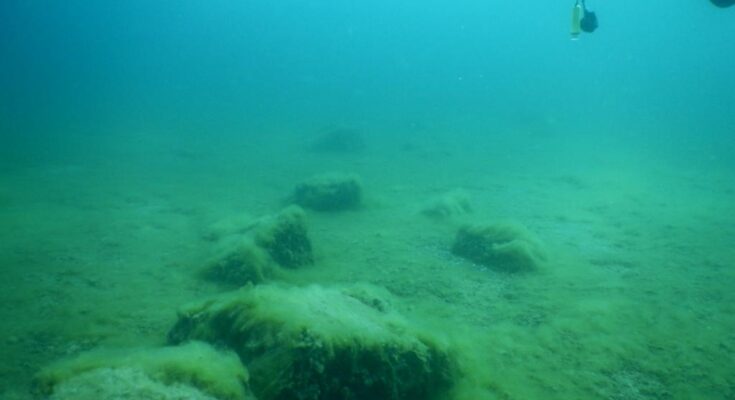A Stonehenge-like underwater stone structure was recently discovered in one of the Great Lakes in the USA, specifically in Lake Michigan.
5,000 years older than the British Stonehenge
The thing about this underwater structure is that it is even older than Stonehenge in the United Kingdom by about five thousand years. In 2007, archaeologists, led by Mark Holley, a professor at Northwestern Michigan College, found the site while surveying the lake bed. They stumbled upon a group of large stones arranged in a circle near Traverse City, Michigan.
Holley admitted that finding the structure forty feet (about twelve meters) underwater came as a total surprise. Initially, they were uncertain about what they’d stumbled upon.
However, after analyzing the site, it became clear that humans deliberately positioned the stones in a circular pattern. Some of these stones weighed as much as three thousand pounds (around 1,360 kilograms), according to Medium reports.
Scientists are puzzled by the discovery of a mysterious 'Stonehenge' structure at the bottom of a US lake, sparking intrigue and curiosity. pic.twitter.com/6QBMfIZJEj
— The Journal Post (@thejournalpost) February 8, 2024
The circular pattern spans about forty feet in diameter with an inner circle about twenty feet wide. These granite stones, found locally, are thought to be around ten thousand years old, making this one of North America’s oldest formations.
Despite the stones’ resemblance to Stonehenge’s monoliths, the origin of the Lake Michigan stones remains unclear, as reported by indy100.
Scientist Rob Nelson explained in an episode called “American Stonehenge” on DiscoveryUK that although the stones create a perfect geometric shape, they’re not stacked or linked in the same manner.
Nelson emphasized that while prehistoric tribes frequented the Great Lakes for millennia, we know very little about them. He mentioned he hadn’t ever come across anything similar to this formation in archaeological records.
Hunter-gatherer forefathers might have placed the stones
Nelson had a conversation with a man named Hank, whose ancestors belonged to the Anishinaabe community. They are among the earliest inhabitants of the region. Hank believes his tribe’s ancient hunter-gatherer ancestors, who settled there after the last Ice Age, placed the stones there for a sacred reason.
“[In Anishabe culture], we refer to stones as animate objects because they come from the mother, the Earth, who is alive,” Hank explained. He pointed out that the monument in the lake is evidence of his people’s long history in the area.
Holley noted that ten thousand years ago, the area wasn’t underwater. Communities actually lived right where the stones were found. However, five thousand years later, water levels rose, submerging the Lake Michigan basin.



